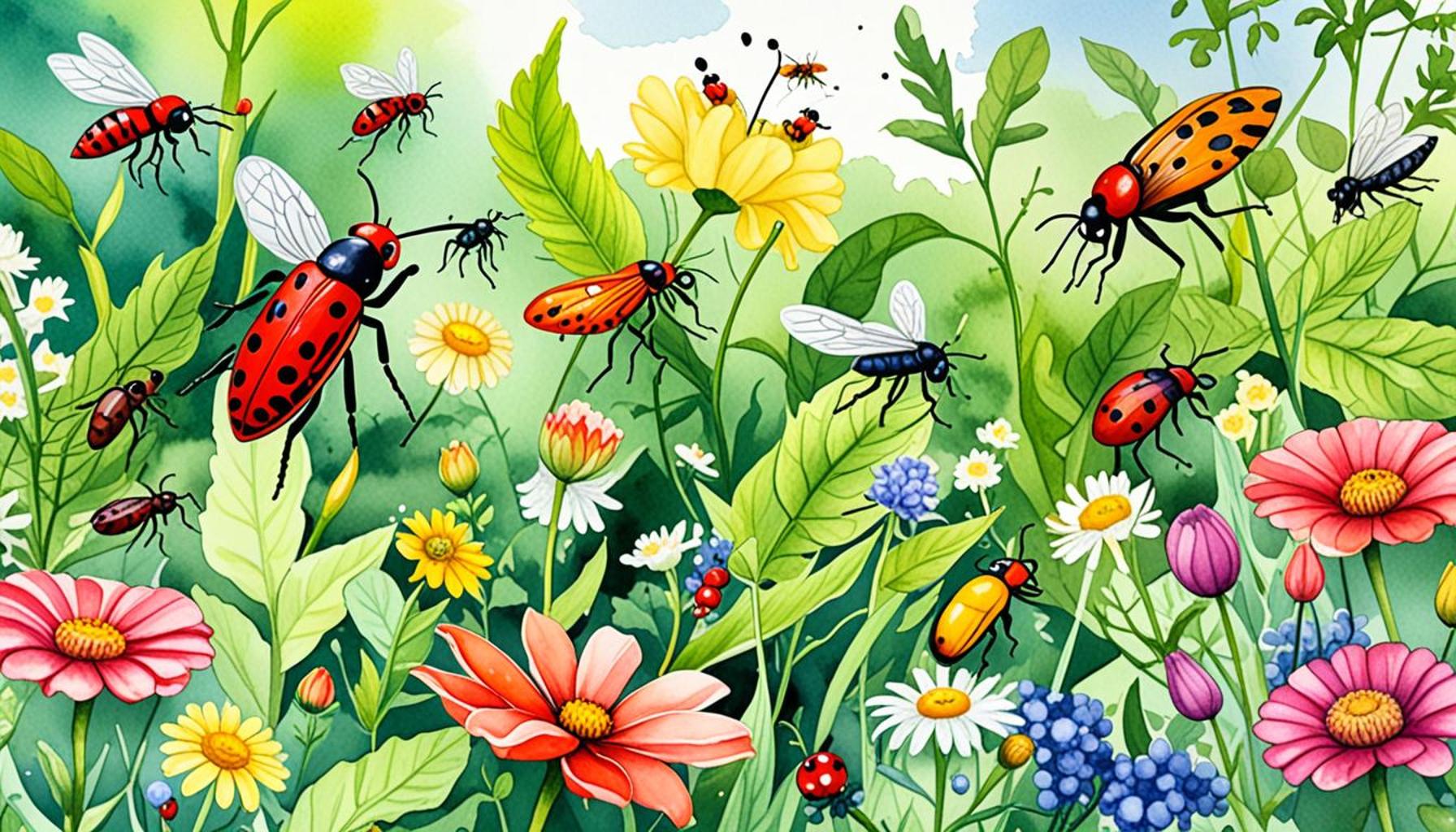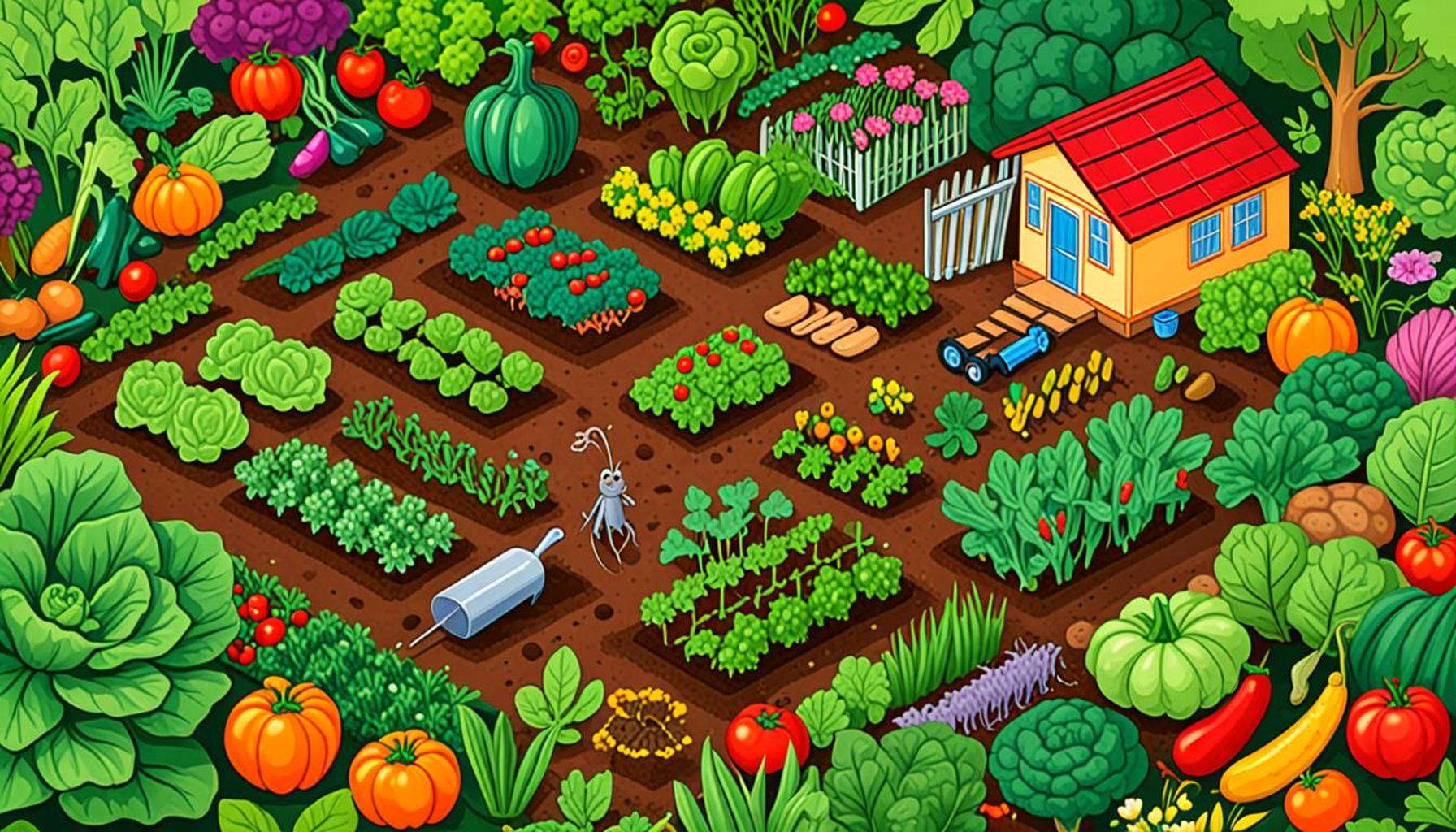Pest Prevention Practices: Tips for a Healthy and Productive Garden

Gardening can be a rewarding endeavor, but the threat of pests can quickly turn a lush garden into a disaster zone. Effective pest prevention practices are essential for maintaining a healthy and productive garden. By implementing simple strategies, you can protect your plants and ensure a bountiful harvest.
Why Pest Prevention Matters
Pests pose a significant threat to gardeners, as they can damage crops, negatively affect plant health, and ultimately reduce yields. These undesirable visitors often multiply quickly, leading to an overwhelming infestation if not addressed promptly. To safeguard your green space, consider these key reasons for prioritizing pest prevention:
- Economic savings: Preventing pests reduces the need for costly treatments or potentially complete crop loss. For instance, addressing a small aphid issue early may save you from extensive damage that requires expensive pesticides or replanting efforts later.
- Environmental impact: Sustainable pest management practices minimize chemical usage, which can harm beneficial insects and the surrounding ecosystem. Many gardeners are increasingly leaning towards organic gardening, using natural deterrents that are less harmful to the environment.
- Plant health: Healthy plants are inherently more resilient and better able to withstand the stressors presented by pests. Strong plants are not only more productive but also can thrive under less-than-ideal conditions, enhancing their overall vitality.
Common Garden Pests to Watch For
It’s crucial to be aware of common threats lurking in your garden. Familiarizing yourself with these pests is the first line of defense:
- Aphids: These tiny, soft-bodied insects suck sap from plants and can reproduce rapidly. They often cluster on new growth, leading to distorted leaves and stunted growth. Some types of aphids even excrete a sticky substance called honeydew, which encourages mold growth.
- Slugs and snails: Slow movers that thrive in damp conditions, slugs and snails feast on leafy greens overnight. To identify their presence, look for irregular holes in leaves and slime trails on the soil.
- Spider mites: These minute pests cause webbing and leaf damage. They tend to thrive in dry conditions and can decimate entire plants if left unchecked. Spider mite infestations can often be spotted by the yellowing of leaves and tiny speckling patterns.
Simple Tips for Effective Pest Prevention
Adopting effective practices can drastically reduce pest problems. Here are a few actionable strategies to enhance your pest management:

- Rotate crops: Changing the location of your plants every season disrupts pest life cycles. For example, moving tomatoes away from their previous spot can prevent soil-borne pests from returning.
- Companion planting: Utilize the practice of growing specific plants together to deter pests. For instance, marigolds are known to repel nematodes and can offer protection to your vegetable crops.
- Regular maintenance: Keeping your garden clean and free of debris can greatly diminish hiding spots for pests. Pulling weeds, removing dead plants, and keeping pathways clear can help create an inhospitable environment for pests.
Embracing these pest prevention practices can transform your gardening experience. By establishing proactive measures and keeping a watchful eye on your plants, you can foster a flourishing ecosystem where both your garden and your enjoyment of gardening thrive. Exploring these practices will not only enhance your gardening endeavors but also deepen your connection with the natural world around you.
DON’T MISS OUT: Click here to enhance your gardening skills
Understanding the Importance of Proactive Pest Management
Pest prevention is more than just a reaction to an existing problem; it requires a proactive approach that emphasizes early detection and ongoing management. The foundation of a thriving garden lies in its defense against pests, making pest prevention practices an integral part of sustainable gardening. Simply relying on pesticides when pests appear can lead to escalating problems, affecting not only the plants but also the garden’s overall ecosystem.
Consider the fact that many pests, when unchecked, can evolve rapidly, rendering conventional treatments less effective over time. Additionally, plants that are subjected to pest pressures may yield less, weakening their ability to grow and produce in the future. Thus, employing an anticipatory mindset towards pest prevention helps establish a healthier and more productive garden environment.
Key Strategies for an Unblemished Garden
Implementing effective pest prevention practices demands an understanding of a few essential strategies. Below are practical tips that any gardener can adopt to keep pests at bay:
- Soil Health: Healthy soil is a cornerstone of pest management. By enriching your garden with organic matter and nutrients, you enhance the resilience of plants, making them less susceptible to pest infestations. Regularly amending your soil with compost can significantly improve its vitality.
- Watering Wisely: Overwatering creates a damp environment conducive to pests such as slugs and snails. Water your plants early in the day to reduce moisture retention overnight, thereby discouraging such pests from making your garden their home.
- Use Barrier Methods: Physical barriers like row covers can protect young plants from insects that may harm them. These lightweight materials facilitate air and moisture flow while keeping harmful pests at bay without the use of chemicals.
- Utilize Natural Predators: Encourage beneficial insects such as ladybugs and lacewings, which feed on harmful pests like aphids. By creating a habitat that attracts these allies, such as planting flowering herbs, you can enhance your garden’s natural defense system.
By paying attention to these strategies, you can cultivate a proactive approach to pest management that fosters strong plant growth while maintaining an ecological balance. The right combination of practices not only shields your garden from instant threats but also promotes enduring health and productivity for years to come.
Enhancing Your Pest Prevention Knowledge
Gardening is an evolving practice; continued learning about pest prevention methods can further optimize your garden’s health. Utilize resources such as extension services offered by universities, local gardening clubs, or reputable gardening websites. Engaging with seasoned gardeners can also offer valuable insights and tips tailored to your specific region’s challenges. As you delve deeper into pest prevention practices, remember that an informed gardener is a successful gardener, paving the way for a vibrant and fruitful growing experience.
| Prevention Method | Benefits |
|---|---|
| Crop Rotation | Breaks pest life cycles and improves soil health. |
| Beneficial Insects | Natural predators reduce pest populations without chemicals. |
| Companion Planting | Natural repellents deter pests and promote healthy growth. |
| Physical Barriers | Netting and row covers effectively prevent pest access. |
Integrating the right pest prevention practices into your gardening routine is essential for maintaining a healthy and productive garden. For instance, employing crop rotation not only disrupts pest life cycles but also contributes to the overall vitality of your soil by allowing different nutrients to replenish over time.Another effective strategy involves the use of beneficial insects. These natural predators, such as ladybugs and lacewings, prey on common garden pests such as aphids, thereby reducing the need for chemical treatments. By fostering an ecosystem that supports these insects, you enhance the balance of nature within your garden.Additionally, companion planting can yield dual benefits: certain plants repel harmful pests, while others attract beneficial insects. For example, planting marigolds alongside vegetables can provide a natural deterrent to nematodes and aphids.Don’t overlook the power of physical barriers such as netting and row covers. These simple yet effective tools guard against various pests, helping to safeguard your garden’s produce without the use of harmful pesticides. Each of these methods contributes significantly to sustainable gardening, ensuring your plants thrive against pest pressures. Embracing these practices not only leads to a bountiful harvest but also leads to a more environmentally friendly approach to gardening.
DISCOVER MORE: Click here to learn about essential tools for soil preparation
Incorporating Companion Planting Techniques
One fascinating method to enhance pest prevention practices is through the application of companion planting. This age-old gardening technique involves growing certain plants together that can mutually benefit each other, particularly in pest management. For instance, marigolds are known to deter nematodes and other pests while attracting beneficial insects. Placing marigolds throughout your vegetable garden can create a natural barrier against unwanted invaders, allowing crops to thrive without the threat of pests.
Another effective pairing is planting garlic or onions alongside your vegetables, as their strong scents can repel aphids and other pests. Similarly, basil is revered for its ability to enhance the flavor of tomatoes while also dissuading whiteflies and other harmful insects. Understanding these relationships between plants not only leads to a healthier garden but also promotes biodiversity, an essential component for long-term ecological balance.
Regular Monitoring and Inspection
Active observation of your garden is crucial in maintaining a pest-free environment. Make it a routine to inspect your plants at least once a week. Look for signs of pest activity, which may include visible insects, unusual holes in leaves, or sticky residue. Early detection is key; many pests breed rapidly, and catching a small infestation can prevent a full-blown crisis.
You can also keep a garden journal to track changes and document pest sightings and treatments. This information can assist you in recognizing patterns and cycles, helping you anticipate when certain pests may appear based on previous years’ data.
Employing Natural and Organic Solutions
Transitioning to organic pest control methods can greatly enhance your gardening experience while aligning with eco-friendly principles. Solutions such as neem oil, insecticidal soap, and diatomaceous earth can effectively manage pests without the harmful side effects associated with synthetic pesticides. Neem oil, derived from the seeds of the neem tree, disrupts the life cycle of various pests while being safe for beneficial insects when used correctly.
Additionally, homemade sprays utilizing ingredients like garlic or hot pepper can ward off various pests while being safe for use around food plants. These natural remedies not only minimize chemical use but also support a healthier ecosystem, fostering beneficial organisms that naturally combat pests.
Promoting Biodiversity in Your Garden
Another practical tip is to promote biodiversity within your garden’s ecosystem. A diverse garden is less inviting to pests; monoculture systems often become targets for infestations due to abundant food sources for pests. Introducing a variety of plants, flowers, and herbs can attract beneficial insects while keeping harmful ones at bay. Native plants specific to your region can also be particularly effective, as they are better adapted to local soil and climate, reducing the chance for disease and pest problems.
Moreover, planting cover crops in the off-season can enhance soil fertility and discourage weed growth, reducing habitats for potential pests. As part of your pest prevention strategy, consider implementing a rotation schedule or intercropping to further disrupt any pest life cycles that may threaten your productive garden.
DIVE DEEPER: Click here to learn about using companion plants to keep your garden pest-free
Conclusion
In conclusion, implementing effective pest prevention practices is essential for cultivating a healthy and productive garden. By embracing techniques like companion planting, maintaining regular inspections, and employing organic pest control solutions, gardeners can sustain a vibrant ecosystem that naturally resists infestations. The integration of biodiversity into your garden not only strengthens pest resistance but also enhances the overall health of your plants.
As you explore the world of gardening, remember that every garden is unique, shaped by its environment and the relationships between its inhabitants. Paying attention to these nuances can inspire you to experiment with different plants and pest management strategies that suit your specific circumstances. Keeping meticulous records and observing patterns will arm you with knowledge for future growing seasons, allowing for proactive adjustments that can bolster your garden’s resilience.
Ultimately, whether you’re an experienced gardener or just embarking on your horticultural journey, the key is to remain curious and open to new ideas. Dive deeper into organic practices, discover the benefits of diverse plant pairings, and enjoy the process of nurturing your garden. By investing time and effort into pest prevention practices, you’re not only protecting your crops but also contributing positively to the environment. So, roll up your sleeves and start exploring the beautiful synergy between nature and gardening—your plants (and the planet) will thank you!


